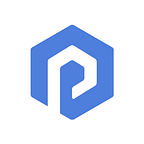Real-World Financial Assets Find Provenance
Traditional Finance (TradFi) has entered the new era, already actively leveraging the benefits of blockchain technology across multiple asset classes and financial sectors, including asset management, banking, private equity, trade finance, insurance, and more.
Provenance Blockchain, built with the Interchain Stack, is at the forefront of helping TradFI embrace this new technological paradigm. The ecosystem built around Provenance Blockchain includes over 70 prominent financial institutions such as Apollo Global Management, Hamilton Lane, Guaranteed Rate, as well as innovative fintech companies like Figure and Oasis Pro.
In this article, let’s have a look at why TradFi are choosing to build on the Provenance Blockchain and how this is driving adoption of the Interchain Stack.
Why Provenance Blockchain
In 2022, tokenization emerged as a buzzword, signifying a significant shift in TradFi adoption. Recognizable financial institutions moved beyond experimentation to tokenize assets and manage digitally-native financial assets on the blockchain. Leading this wave of adoption is Provenance Blockchain, with over $8.2 billion in real-world financial asset (RWA) value securely locked on-chain (TVL) and more than $15 billion in RWA transactions facilitated.
Provenance Blockchain has introduced several groundbreaking achievements, including the first blockchain-native consumer loans, the first asset-backed securitization on a blockchain, and the first bank-minted tokenized deposits in the United States.
As the blockchain of choice for financial services, Provenance Blockchain is part of the interchain ecosystem, constructed using Cosmos SDK. It is exclusively for the financial services and insurance industry. Provenance Blockchain has had a singular focus since inception in 2018, to build a protocol specifically to modernize financial services on blockchain infrastructure. One notable aspect is in the construct of Provenance Blockchain Network, which follows a hub-and-spoke model, consisting of a decentralized and public Mainnet, along with private permissioned Zones. These Zones are permissioned by an operator, function as independent blockchains, yet maintain full interoperability with the Provenance Blockchain Mainnet.
Features and Benefits of Zones
Provenance Blockchain Zones are viewed as a forward-looking and future-proof choice for financial institutions seeking to leverage blockchain technology without compromising control or complying with specific jurisdictional regulations. Zones provide institutions with complete control over who participates in their Zone, ensuring that business and transaction requirements are met. Despite being independent from the Mainnet, Zones enable institutions to seamlessly transfer assets and workflows between Zones and the Provenance Blockchain Mainnet using IBC.
This independence from the Mainnet empowers the operator to control gas prices, participating validators, and governance. Gas fees are only applicable when engaging with the Mainnet. One significant benefit of Zones is that institutions can maintain control over a private blockchain while still gaining access to the open-source tools provided by the Provenance Blockchain ecosystem developer community.
Zones enable institutions to manage their digital asset perfection and ledgering privately on a blockchain while ensuring the integrity of proofs secured by the public Mainnet. This approach guarantees the provenance of their assets, which is crucial when a company brings a portion of these assets to the Mainnet for exchange with third parties.
Moreover, Zones have the capability to selectively disclose certain information to the Mainnet by publishing a special query gateway contract. This allows for the selective disclosure of information onto the public network concerning private assets, which can be used in Mainnet smart contracts. An example of this use case is the aggregate pricing of loan pools, where the volume of update transactions as payments may not justify pushing them into the Mainnet, considering information privacy concerns.
Zone vs. Building with Cosmos SDK
For institutions interested in Cosmos SDK and IBC, one option is to build their own appchain. However, a key distinction lies in the fact that a Provenance Blockchain Zone inherits all the capabilities engineered at the protocol layer to meet the specific needs of regulated financial services.
The phrase “purpose-built for financial services” carries significant weight. Beyond interoperability and Zones, the Provenance Blockchain protocol encompasses four additional core capabilities: Smart Tokenization, Advanced Identity, Data Privacy, and Exchange. Each of these is supported by specific modules and features necessary to manage the complete blockchain-native lifecycle of financial assets. Another advantage of Provenance Blockchain is that all developers and participants are driven by one common goal: regulated financial services. This focus has led to a concentration of financial service innovation and a united interest in the development of the chain.
Financial use cases are already finding value in Provenance Blockchain Zones. An equity services use case, for example, leverages the Zone for private equity cap table and asset management. Increasingly, regulatory climates in certain jurisdictions, such as the United States banking sector, are becoming a driving force for institutional adoption of Zones. Banking consortiums and large financial institutions are actively exploring and building Provenance Blockchain Zones.
For more information on the Provenance Blockchain Network, please visit Provenance.io. To learn more about why Provenance Blockchain chose interchain and Cosmos SDK, visit https://provenance.io/learn/posts/Built-With-Cosmos-SDKs/.
Follow Provenance Blockchain on Twitter and LinkedIn to stay up to date on the latest.
